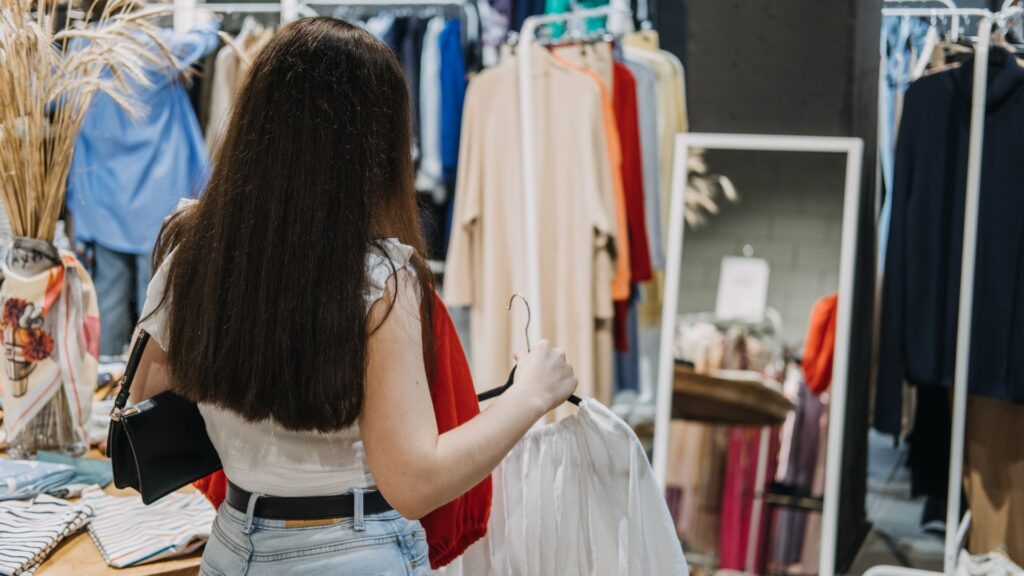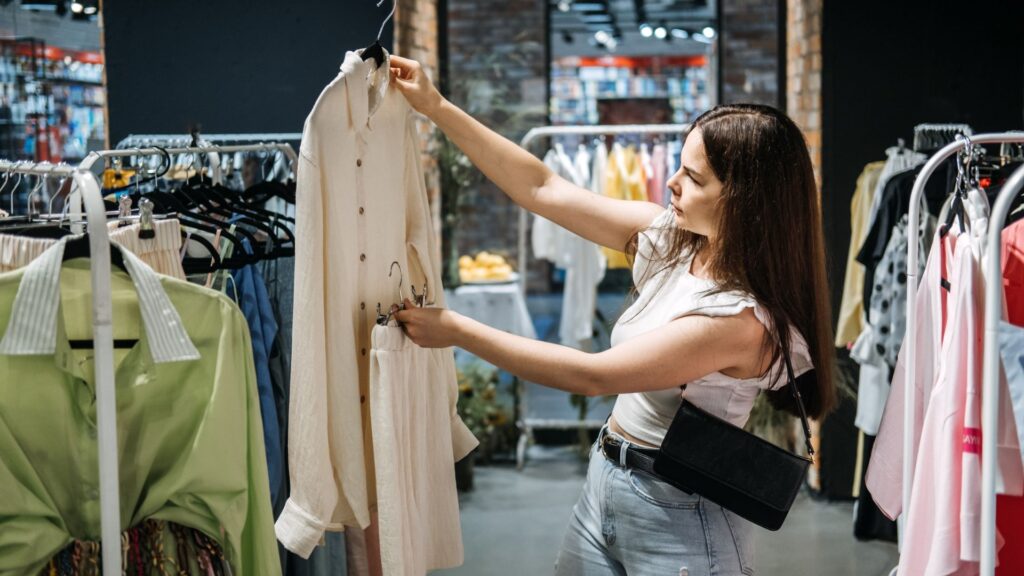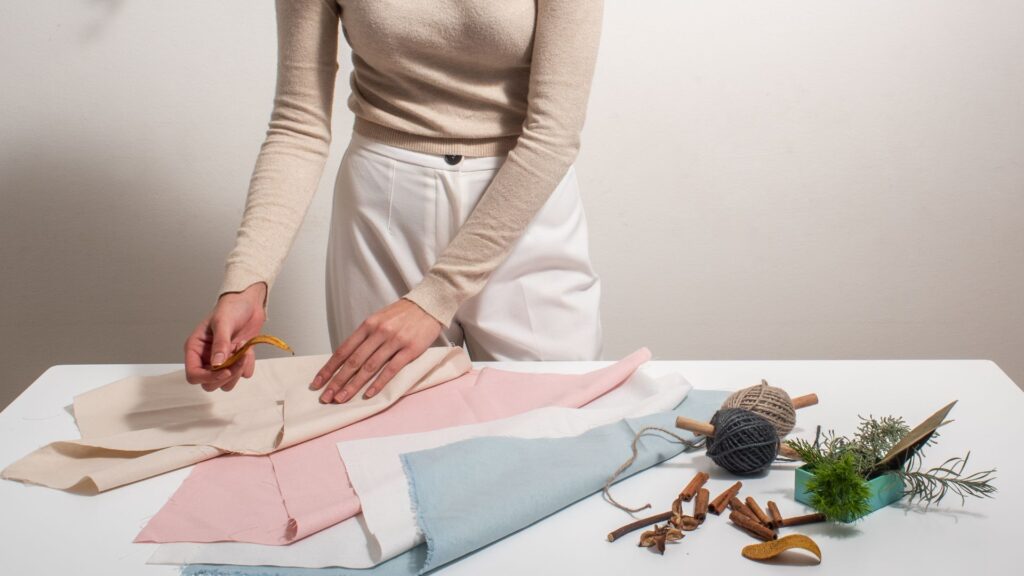Introduction:
Sustainable fashion isn’t just a trend; it’s a movement towards more conscious and ethical consumption. But what exactly does sustainable fashion mean? At its core, sustainable fashion refers to clothing that is designed, produced, and distributed in ways that minimize harm to the environment and ensure fair treatment of workers. However, many people believe that adopting an eco-friendly wardrobe is expensive. This misconception often deters people from making the switch. But here’s the good news—you can build a sustainable wardrobe without breaking the bank! In this guide, we’ll explore practical ways to embrace sustainable fashion while sticking to a budget.
Understanding Sustainable Fashion:
What Makes Fashion Sustainable?
Sustainable fashion encompasses a variety of practices and principles that aim to reduce the negative impact of clothing on the environment and society. This includes everything from ethical production and the use of organic materials to creating garments designed for longevity.
Key Elements of Sustainable Fashion:
- Ethical Production: This involves fair wages, safe working conditions, and no child labor. Brands that adhere to ethical production practices prioritize the well-being of their workers.
- Use of Organic and Recycled Materials: Sustainable brands often use materials like organic cotton, hemp, and recycled fabrics, which have a lower environmental impact.
- Longevity and Durability: Sustainable fashion focuses on creating high-quality pieces that last longer, reducing the need for frequent replacements.
Why Sustainable Fashion Matters:
Environmental Impact of Fast Fashion
Fast fashion, characterized by rapidly produced, low-cost clothing, is a major contributor to environmental degradation. The fashion industry is responsible for approximately 10% of global carbon emissions and produces massive amounts of waste. By choosing sustainable fashion, you help reduce this impact.

Social and Ethical Considerations
Beyond environmental concerns, fast fashion often involves exploitative labor practices. Sustainable fashion, on the other hand, emphasizes fair trade and ethical treatment of workers.
Personal Benefits: Health and Wellness
Wearing clothes made from natural, non-toxic materials can also be better for your skin and overall health. Plus, investing in quality pieces can lead to a more thoughtful and satisfying wardrobe.https://youtu.be/gVpArJ8PK-M?si=TSI4HgaVbz9laSF6
Setting a Budget for Your Eco-Friendly Wardrobe:
Assessing Your Current Wardrobe
Before diving into sustainable shopping, take stock of what you already own. You might be surprised at how many versatile pieces are already in your closet. Identify gaps that need filling and focus on those areas.

Determining a Realistic Budget
Sustainable fashion doesn’t have to be expensive. Start by setting a budget that fits your financial situation. You can begin small, allocating a certain amount each month towards building your eco-friendly wardrobe.
Allocating Funds Wisely
Prioritize purchases that offer the most impact for your wardrobe. Invest in staple items like a good pair of jeans or a versatile jacket that you’ll wear frequently.
Shopping Second-Hand: Thrifting and Vintage Finds:
Benefits of Buying Second-Hand Clothes
One of the most affordable ways to embrace sustainable fashion is by shopping second-hand. Thrifting reduces the demand for new clothing production, keeps items out of landfills, and gives you access to unique pieces.
Where to Shop: Thrift Stores, Online Marketplaces, and More
You can find great second-hand clothes at local thrift stores, vintage shops, and online platforms like Poshmark, Depop, and ThredUp. These places often have hidden gems at a fraction of the cost of new clothing.

Tips for Thrifting Success
Be patient and visit thrift stores regularly. The best pieces often require a bit of digging. Also, don’t be afraid to tailor thrifted items to fit your style perfectly.
Investing in Quality Over Quantity
The Importance of High-Quality Pieces
Rather than buying a lot of cheap items, focus on acquiring fewer, high-quality pieces. Quality clothing lasts longer, looks better, and often feels more comfortable.
How to Identify Quality Clothing
Look for well-made seams, durable fabrics, and timeless designs. Natural fibers like cotton, wool, and linen are often more durable and eco-friendly than synthetic materials.
Long-Term Savings from Investing in Quality
While high-quality items may cost more upfront, they often save you money in the long run because they don’t need to be replaced as frequently.
DIY Fashion: Upcycling and Repurposing
What is Upcycling?
Upcycling is the process of transforming old or unused items into something new and useful. In fashion, this could mean turning an old t-shirt into a tote bag or embellishing a plain dress with unique accessories.

Simple DIY Fashion Projects
Start with easy projects like hemming pants, adding patches to jeans, or turning an old scarf into a headband. These simple DIYs can breathe new life into your wardrobe without costing much.
How Upcycling Saves Money and the Environment
Upcycling not only saves money but also reduces waste by reusing materials that would otherwise end up in landfills.
Sustainable Fashion Brands on a Budget:
Affordable Sustainable Fashion Brands
Brands like Everlane, Pact, and People Tree offer sustainable clothing at more accessible price points. These companies focus on transparency, ethical production, and using eco-friendly materials.https://blissfultrend.com/category/health-nutriron/
What to Look for in a Sustainable Brand
When choosing sustainable brands, look for those that use organic or recycled materials, have transparent supply chains, and offer fair wages to their workers.

Online Platforms for Affordable Sustainable Fashion
Websites like Good On You and Shop Ethical can help you find budget-friendly, sustainable fashion options. These platforms rate brands based on their sustainability practices.
Building a Capsule Wardrobe:
What is a Capsule Wardrobe?
A capsule wardrobe is a small collection of versatile clothing items that can be mixed and matched to create numerous outfits. This minimalist approach to fashion is both sustainable and budget-friendly.
Steps to Create Your Own Capsule Wardrobe
Start by choosing a neutral color palette and selecting key pieces like a classic white shirt, black pants, and a denim jacket. Aim for quality over quantity, and choose items that can be styled in multiple ways.

Benefits of a Capsule Wardrobe
A capsule wardrobe simplifies your life by reducing decision fatigue, saves money by curbing impulse purchases, and is inherently more sustainable due to its minimalist nature.
Eco-Friendly Fabrics: What to Look For
Organic Cotton, Hemp, and Linen
Organic cotton, hemp, and linen are some of the most eco-friendly fabrics available. They are biodegradable, require less water, and are free from harmful pesticides.

Recycled and Upcycled Fabrics
Recycled fabrics, like those made from plastic bottles or old garments, reduce waste and require fewer resources to produce. Upcycled fabrics are another great option, as they give new life to materials that would otherwise be discarded.
The Role of Certifications: GOTS, OEKO-TEX, etc.
Look for certifications like GOTS (Global Organic Textile Standard) and OEKO-TEX, which ensure that the fabrics meet strict environmental and social criteria.
Caring for Your Clothes to Extend Their Lifespan:
Sustainable Laundry Practices
Washing your clothes less frequently, using cold water, and air drying can extend the life of your garments. Additionally, use eco-friendly detergents to reduce the environmental impact.
Proper Storage Techniques
Store your clothes properly to avoid unnecessary wear and tear. For example, hang delicate items to prevent wrinkles and use padded hangers to maintain the shape of your garments.
Repairing and Maintaining Your Clothing
Learning basic sewing skills can help you repair minor damages like loose buttons or small tears, prolonging the life of your clothes and keeping them out of the landfill.
Minimalist Fashion: Embracing Less
Understanding Minimalist Fashion
Minimalist fashion focuses on simplicity, functionality, and timelessness. It’s about owning fewer, but higher-quality items that serve multiple purposes.

How Minimalism Aligns with Sustainability
Minimalism naturally complements sustainability by encouraging thoughtful consumption and reducing waste. It’s about buying less but choosing well.
Tips for Adopting Minimalist Fashion
Start by decluttering your wardrobe, keeping only what you truly love and wear. Invest in versatile pieces and avoid trendy items that quickly go out of style.
Avoiding Greenwashing in Fashion:
What is Greenwashing?
Greenwashing occurs when brands falsely market their products as environmentally friendly to attract eco-conscious consumers. It’s important to be aware of this practice to avoid being misled.

How to Spot Genuine Sustainable Practices
Look for transparency in a brand’s supply chain, certifications, and third-party audits. Brands that are truly sustainable will provide detailed information about their practices.
Holding Brands Accountable
Support brands that align with your values by purchasing from them and sharing your positive experiences. Conversely, call out brands that engage in greenwashing to hold them accountable.
Making the Most of Seasonal Sales and Discounts:
Timing Your Purchases
Take advantage of sales and discounts to buy sustainable clothing at a lower cost. Keep an eye on end-of-season sales, holiday promotions, and clearance events.

Shopping Smart During Sales
Make a list of items you need and stick to it. This helps you avoid impulse buys and ensures that you’re investing in pieces that truly add value to your wardrobe.
Sustainable Practices During Sales Events
Even during sales, prioritize quality over quantity. Avoid buying items just because they’re on sale—focus on what you actually need and will use.
Conclusion:
Building an eco-friendly wardrobe on a budget is entirely possible with the right approach. Start by assessing what you already own, setting a budget, and focusing on quality over quantity. Embrace thrifting, upcycling, and shopping from sustainable brands that offer affordable options. Remember, sustainable fashion isn’t about perfection; it’s about making more mindful choices that align with your values. Every small step counts towards a more sustainable future.
What are the most affordable sustainable fashion brands?
Some affordable sustainable fashion brands include Everlane, Pact, and People Tree. These brands offer ethically produced clothing at reasonable prices.
How can I start a sustainable wardrobe with no budget?
Start by assessing your current wardrobe and making the most of what you already own. Consider thrifting, swapping clothes with friends, or upcycling old items.
Are there any online tools for building a capsule wardrobe?
Yes, tools like Cladwell and Stylebook can help you plan and organize your capsule wardrobe, making it easier to mix and match your clothing.
How can I avoid greenwashing when shopping for clothes?
To avoid greenwashing, look for transparency in the brand’s supply chain, check for certifications, and research the brand’s practices thoroughly.
What are some tips for maintaining my eco-friendly clothes?
Extend the life of your clothes by washing them less frequently, using cold water, air drying, and repairing minor damages instead of discarding them.



2 Responses
end0nd
13uekm